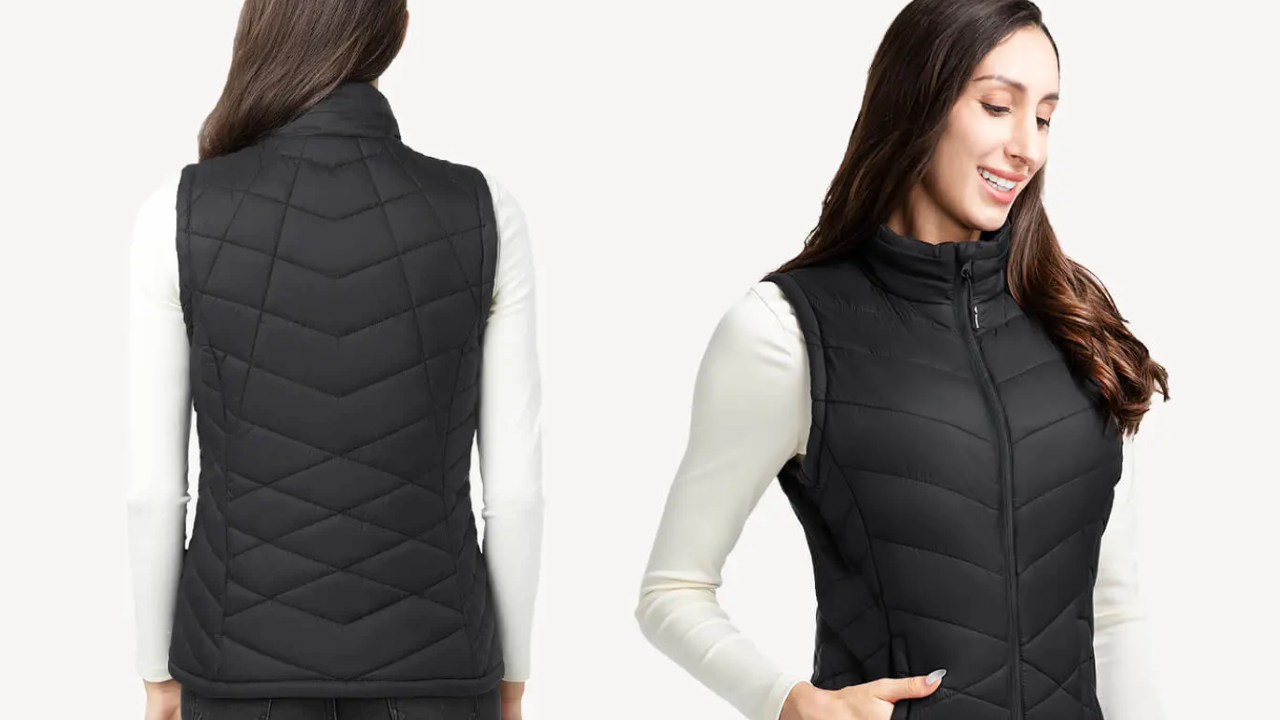Women’s heated vests are a popular choice for staying warm in cold weather, but ensuring safety while using them is paramount. These vests, equipped with heating elements, come with several safety measures. First and foremost, they incorporate low-voltage systems, reducing the risk of electrical hazards.
Women’s heated vests prioritize safety with low-voltage systems, auto-shutoff features, and fire-resistant materials. Even heat distribution prevents hotspots, and waterproofing guards against moisture. You can also go to website of its official account for more in-depth knowledge. Choose the right size, follow manufacturer guidelines, and conduct regular inspections for optimal safety when enjoying the warmth and comfort of these vests.
Knowledge about Women’s Heated Vests
A women’s heated vest is a specialized clothing item designed to provide warmth and comfort in cold weather conditions. It features built-in heating elements that generate heat when powered, usually by a rechargeable battery. These heating elements are strategically placed throughout the vest, often in the chest and back areas, to distribute warmth evenly.
Women’s heated vests are popular for outdoor activities like hiking, skiing, and camping, as well as for everyday use in cold climates. They come in various styles and designs, including hooded and non-hooded options, and are available in different sizes to suit individual preferences.
Ensuring Safety in Women’s Heated Vests
As winter sets in and the temperatures drop, women often turn to heated vests to keep warm in chilly weather. However, ensuring safety is paramount when using heated vests, and it’s essential to be aware of the various safety measures incorporated into these garments to prevent accidents and enjoy a cosy winter season.
Low Voltage Systems
One of the fundamental safety features in women’s heated vests is the use of low-voltage heating systems. These systems operate at a lower voltage, typically 12 volts, which significantly reduces the risk of electrical hazards.
Low voltage systems are safer to use, even in adverse conditions, and they are less likely to cause shocks or electrical fires. This feature ensures that women can comfortably wear their heated vests without compromising their safety.
Auto-Shutoff Mechanisms
Many women’s heated vests are equipped with auto-shutoff mechanisms. These mechanisms are designed to turn off the heating elements after a predetermined period, usually around 30 minutes to 2 hours. This serves a dual purpose: it conserves battery life and prevents the vest from overheating.
Overheating can be uncomfortable and, more importantly, potentially harmful. These auto-shutoff features provide peace of mind for wearers, ensuring they remain warm without the risk of excessive heat.
Temperature Controls
The ability to control the temperature is another critical safety measure. Women’s heated vests often come with multiple heat settings, allowing wearers to adjust the level of warmth to their preference and comfort.
Having control over the temperature ensures that users do not inadvertently expose themselves to excessive heat. It’s important to follow the manufacturer’s recommendations for temperature settings to prevent overheating.
Waterproof and Fire-Resistant Materials
To enhance safety, heated vests are typically constructed from waterproof and fire-resistant materials. Look for water-resistant or waterproof vests to protect against moisture and dampness. Waterproofing is essential because it protects the electrical components from moisture, which can cause short circuits or other electrical issues.
Even Heat Distribution and Proper Sizing
Ensure the vest provides even heat distribution to prevent hotspots that could lead to burns. Select the right size for a snug fit to maximize heat transfer and comfort.
Regular Inspection and Manufacturer Instructions:
Periodically inspect the vest for wear and tear, frayed wires, or damaged connectors. Always follow the manufacturer’s safety instructions and care guidelines to maintain the vest’s safety and performance. Follow manufacturer guidelines for battery maintenance and charging to avoid issues.
Conclusion
Safety is paramount when it comes to women’s heated vests. The incorporation of low-voltage systems, auto-shutoff features, and fire-resistant materials ensures protection against electrical hazards and overheating. Even heat distribution minimizes the risk of burns while waterproofing guards against moisture-related issues. Choosing the right size, following manufacturer guidelines, and regular inspections further contribute to safety.

